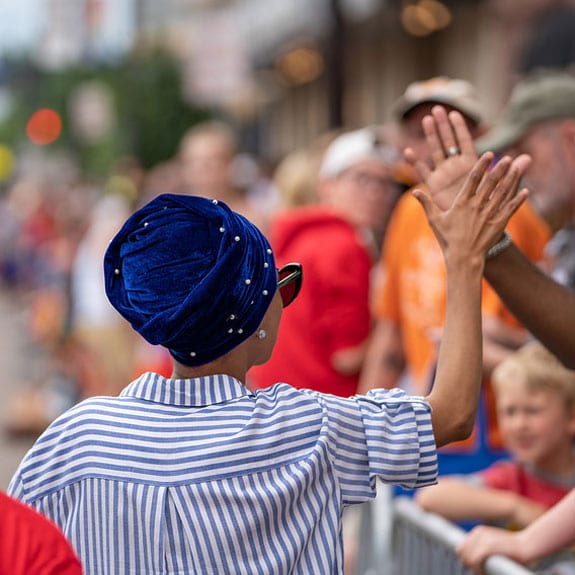
January 3, 2019; Indian Country Today and Washington Post
Last week, notes Indian Country Today, marked the first time ever that Native American women had representatives in Congress, as Rep. Sharice Davids (Ho Chunk), D-Kansas, and Rep. Deb Haaland (Laguna Pueblo), D-New Mexico, took their seats. As the Washington Post reports, 2019 also marks the first time that Muslim women have had seats in Congress, with Ilhan Omar, D-Minnesota and Rashida Tlaib, D-Michigan also being sworn into office.
Both achievements are historic and worth celebration.
Arsalan Suleman, a former US envoy to the Organization of Islamic Cooperation, tells the Washington Post team that the election of Omar and Tlaib is part of a broader trend of young Muslims getting involved in US politics. “We’re sort of seen through the lens of security, always—counterterrorism or countering extremism. Part of the excitement and joy that people have, seeing these two women being sworn in, is they’re showing…that’s not the reality of Muslim American life.” Instead, Suleman explains, Tlaib and Omar focused their campaigns on key issues affecting their communities, such as healthcare.
In the American Indian community, Trahant points out, the victories of Davids and Haaland were hard won and a long time coming. As the below chart assembled by Indian Country Today reveals, at least 10 Native American women tried to make it to Congress in the past three decades before Davids and Haaland finally succeeded this past year:
| Jeannie Givens | Coeur d’Alene | Idaho 1 | D | 1988 | Won primary, lost general |
| Ada Deer | Menominee | Wisconsin 2 | D | 1992 | Won primary, lost general |
| Georgianna Lincoln | Athabascan | Alaska | D | 1996 | Won primary, lost general |
| Kalyn Free | Choctaw | Oklahoma 2 | D | 2004 | Defeated in primary |
| Diane Benson | Tlingit | Alaska | D | 2006 | Won primary, lost general |
| Georgianna Oliver | Choctaw | Oklahoma 2 | D | 2008 | Won primary, lost general |
| Mary Kim Titla | White Mountain Apache | Arizona 1 | D | 2008 | Defeated in primary |
| Winona Benally | Navajo | Arizona 1 | D | 2012 | Defeated in primary |
| Denise Juneau | Mandan Hidatsa Arikara | Montana | D | 2016 | Won primary, lost general |
| Victoria Steele | Seneca | Arizona 2 | D | 2016 | Defeated in primary |
| Amanda Douglas | Cherokee Nation | Oklahoma 1 | D | 2018 | Finalist in first primary, lost runoff |
| Debra Haaland | Laguna Pueblo | New Mexico 1 | D | 2018 | Elected |
| Sharice Davids | Ho Chunk | Kansas 3 | D | 2018 | Elected |
| Yvette Herrell | Cherokee Nation | New Mexico 2 | R | 2018 | Won primary, lost general |
As Trahant notes, the seeds of the victories achieved by Haaland and Davids can be found in the campaigns of Native American women who preceded them, even though they fell short of winning office. Trahant notes that Denise Juneau, who ran for Montana’s sole congressional seat in 2016, told him afterward that while she was disappointed in losing, “I don’t feel bad about it because we did everything we were supposed to. We just lost.”
That’s actually a really good space for me. Every time another Native woman steps up to run for any office, whether that be the state legislature, city council, US Congress, it sort of paves the way. There’s sort of a pipeline, which is really awesome right now, that there’s never been a path for Native women to just really step up. I believe right now, we’re in a time and space where we see that happening.
Sign up for our free newsletters
Subscribe to NPQ's newsletters to have our top stories delivered directly to your inbox.
By signing up, you agree to our privacy policy and terms of use, and to receive messages from NPQ and our partners.
The fact that it was women who won office in 2018 is not lost on Trahant. He notes that the late Wilma Mankiller would point out that when the Cherokee first met with a United States treaty negotiating team, one of their first questions was “Where are your women?”—as the Cherokee norm was for women to participate in important ceremonies and negotiations.
Today, Trahant observes, underrepresentation of women remains the norm. “So as much as this new Congress is celebrated for its diversity and inclusivity, the fact is that the House of Representatives has reached a historic high by electing 102 women, or 23 percent. The Senate now has 25 women in that body, 25 percent,” Trahant adds.
Trahant points out that similar patterns obtain in tribal governments. According to April 2017 figures, women accounted for 25 percent of seats on councils and other tribal governing bodies.
“Women, and Indian Country, do a little better in representation in state legislatures across the country,” reports Trahant. “The most recent figures from the National Conference of State Legislatures show that approximately 2,107 women will serve in the 50 state legislatures in 2019.” This, Trahant says, works out to a record 28.5 percent of all state legislators nationwide, up from 25.3 percent in 2016.
“Indian Country,” Trahant notes, “sends more women to state legislatures than the general population. In this last election, 55 new members were elected and 26 were women or 47 percent. That is up from 40 percent two years ago.”
Of course, there remain more milestones to reach. One that Trahant mentions is governorships. A Native American has never been elected state governor, but in 2018, two Native American women won major party nominations: Paulette Jordan (D) in Idaho and Andria Tupola (R) in Hawaii. Both lost, but like Juneau in 2016, may pave the way for others. “There will be a first at some point,” Trahant remarks.











